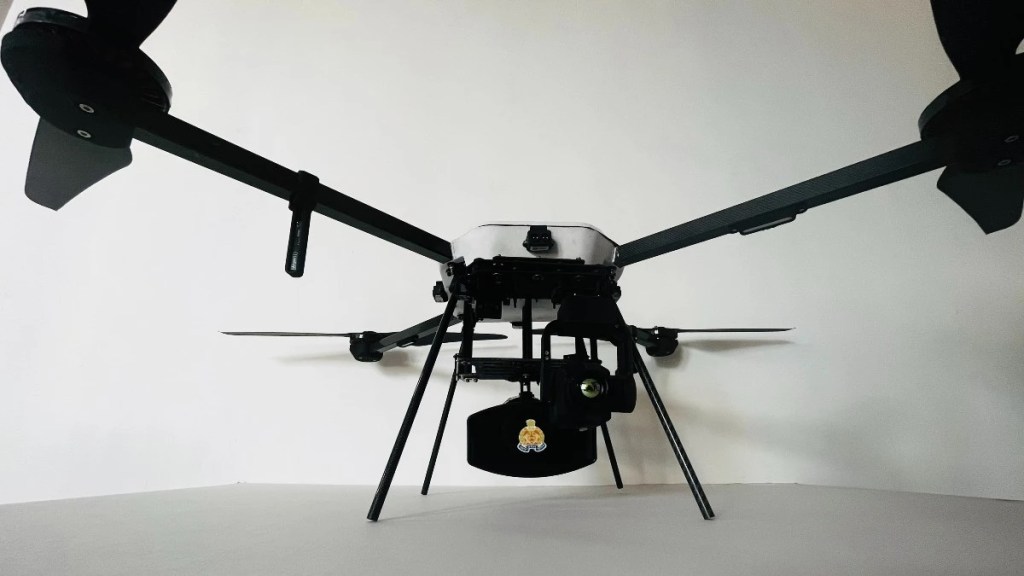By Arun Nagarajan
As drones start being used more frequently for attacks on military as well as strategic civilian installations, the need for drone defence strategies and technologies has become imperative. While the Indian armed forces have their own drone detection and response systems, strategic civilian infrastructure – whether in the private sector or government-owned – also needs to be protected.
Drones are increasingly being used for a range of operations from surveillance to carrying explosive payloads. In the Ukraine-Russia conflict, drones are playing a big role. Both sophisticated and armed drones built by big companies as well as those put together by hobbyists have been used to drop bombs or track enemy troops.
A drone attack that can put out of commission, say, a critical bridge, a big power plant or an oil refinery can do incalculable harm. Because they are often small, carry low payloads and fly below conventional radar coverage, they can hit targets easily. Being unmanned, survival and return to base is not necessary.
In addition to the above, drones are being used for cyber warfare and to snoop on data traffic carried on poorly protected Wi-Fi networks.
It is critical that our sensitive installations are protected. The government has been focussed on standardising the specifications and regulations for counter drones to ensure mitigation of threats. For example, the Ministry of Civil Aviation has issued guidelines for threat assessment, identifying different technologies for mitigating drone threats and the systems required for different threat levels. Similarly, the Bureau of Civil Aviation Security has finalised a strategy to neutralize drones near airports to prevent any rogue drone events.
Along with finalising guidelines for installations like airports and defence, other sensitive installations like refineries are being assessed for risk. However, there is a need to standardise the approach for counter drone system installations across all key installations.
Fortunately, protocols and tools for defending against hostile drones are evolving rapidly. Security professionals and technology companies often work closely together to build comprehensive defence systems.
Building a counter-drone system
The heart of any defence system against hostile drones consists of three different measures – Detection, Identification and Interdiction. Detection systems identify and spot any drone at a distance. Identification systems help tell whether the drones are friendly or hostile. Interdiction systems neutralise such drones early through soft or hard kill methods.
Detection systems include customised surveillance radars, long-range videos, radios, electro-optical, infrared or acoustic sensors. Each has its strengths and would have to be mixed and matched to mitigate the threat scenario. Surveillance radars and radio-based detection systems are very good in covering a wide range but are extremely expensive to install and maintain and also sometimes have blind spots – particularly at low altitudes. Videos and sensors, on the other hand, can fail to operate properly in extreme weather.
New, compact surveillance radar (CSR) systems are gaining popularity because they have most of the advantages of conventional radar systems but cost much less. They are suitable for most installations though they too have some flaws. Currently, however, they are better than most other options. Of course, if the installation is of particular strategic importance, and capital is no issue, it is best to use CSRs with other methods like long-range thermal video cameras to make the detection systems even better.
In many cases, installations would use drones to manage their operations. In this case, the counter-drone systems should be able to allow free entry and exit of such “friendly” drones. To enable this, counter-drone systems have identification protocols like remote network ID, broadcast ID or unmanned traffic management systems which provide visibility and differentiate between “friend or foe” to trigger the necessary actions.
Detection and identification, of course, are only useful if coupled with neutralisation systems. There are several technologies that can be used – RF jammers, EM guns, GPS spoofing, GNSS jammers, kinetic or laser guns. Jammers that can incapacitate the drone as well as laser systems that can destroy the drone are both being sold commercially by companies in the US, Israel as well as Europe.
In India, the Defence Research and Development Organisation (DRDO) has created a counter drone system primarily for use by the armed forces and which has also been deployed for the Prime Minister’s security. A civilian or commercial version can be developed for non-military purposes.
There are three other very important things that need mentioning here. The first is that drone detection systems now need to be part of basic risk planning and mitigation strategies of both private corporations as well as the government.
Equally important, there is a need to not just buy and install a robust system for defence but also invest in properly trained manpower to operate these systems and maintain 24-hour vigilance while following proper protocols.
Finally, just as the government has come up with policies for drone manufacture, certification and airspace regulations, there is a need to frame policies and provide incentives for building drone protection systems.
Given that drones are becoming increasingly sophisticated, a major push for drone detection systems is critical. And that needs a policy push as well.
The author is Technology Partner, EY India.
Disclaimer: Views expressed are personal and do not reflect the official position or policy of Financial Express Online. Reproducing this content without permission is prohibited.
